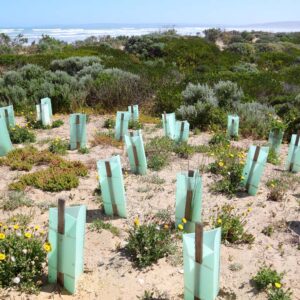In this online course you will learn how soils develop and how soil chemistry and fertility affect crop growth. You will also be taught how soil pollutants affect health and the environment. Some other teaching points of this Warnborough Online Course are:
- Learn about chemical reactions in soil
- Learn about different soil testing methods and soil classification
- Understand ways of improving soil fertility for crop production
- Understand the hydrological cycle and its effect on human health and agriculture
Course Structure:
The duration of this online course is 100 hours. This consists of 10 in-depth lessons:
Lesson 1. Soil Chemistry: An Introduction
- Introduction
- Chemistry Revision (inc. Chemical Terms, Elements, Compounds, Bonds)
- Soil Redox Reactions
- Biogeochemistry and Soil Structure Review
- Biogeochemical Cycles
- Mineralisation
- Immobilisation
- Ammonium Fixation
- The Urea Cycle
- Soil Absorption/Desorption
- Lesson Aims: Describe the dominant geochemical cycles on earth. Demonstrate an understanding of basic chemistry including atoms and their components, elements, compounds and chemical reactions.
Lesson 2. Soil Chemical Processes
- Introduction: How Soils Develop
- Factors of Soil Formation in More Detail
- Weathering Processes of Soil Formation
- Soil Profile Description
- Soil Classification and Description
- Classification of British Soils
- Soil Types and Plant Growth
- Properties of Soils
- Physical and Chemical Properties of Soil
- Soil Characteristics and their Relationship to Plant Growth
- Lesson Aims: Explain the important chemical reactions occurring in soil and their consequences; differentiate between different soil fractions with respect to their nature, size and chemical activity.
Lesson 3. Soil-Chemical Testing
- Introduction
- Common Soil Tests
- Other Soil Cations
- The CEC in Soils
- Lesson Aims: Describe different soil test methods and explain how the test results are used.
Lesson 4. Soil Chemistry – Applications in Agriculture
- The Components of Soil Fertility
- Lesson Aims: Explore components of soil fertility. Describe soil chemistry/fertility factors affecting crop growth in different farming environments. Explain ways of improving soil fertility for crop production. Discuss the impact of chemically altering soil vs. cycling and other natural methods.
Lesson 5. Soil Chemistry – Applications in Environmental Management
- Introduction
- Soil Pollutants
- Soil Remediation
- Lesson Aims: Describe inorganic and organic soil pollutants. Discuss effects on health and the environment. Discuss ways to remediate soils.
Lesson 6. Water Chemistry – Introduction
- Water: Chemical and Physical Properties
- Hydrological Cycle
- Water Resources
- Water Footprint
- Drought and Impact
- Lesson Aims: Outline the components of the earth’s water cycle. Describe the main chemical properties of water. Explain the various ways in which water is classified.
Lesson 7. Water – Chemistry of Water Sources and Drinking Water
- Water Sources And Their Chemical Composition
- Chemistry of Seawater
- Chemistry of Groundwater
- Chemistry of Surface Water
- Chemistry of Potable Drinking Water
- Lesson Aim: Explain the chemistry of different water sources, giving examples of different properties and reactions.
Lesson 8. Water – Chemical Testing
- Introduction
- Water PH
- Electrical Conductivity
- Total Alkalinity
- Total Hardness
- Lesson Aim: Describe different water test methods and explain how the test results are used.
Lesson 9. Water — Applications in Agriculture and Human Health
Lesson 10. Water Chemistry — Applications in Agriculture, Problem-Based Learning Project
The following is a short excerpt from the course re Cation Exchange Capacity.
CATION EXCHANGE CAPACITY (CEC) (ME (MEQ)/100 G OR CMOL(+)/KG)
CEC is an indication of the number of exchange sites within a soil that may temporarily hold positively charged ions. It is generally determined by the amount and type of clay and the amount of organic matter.
You can liken the soil to a magnet – it attracts cations (positively charged ions) and repels anions (negatively charged ions). This knowledge allows people working with soils to understand the nutrients held in a soil and the soil nutrient requirement (in crop growing or pasture management for example). Crop nutrient applications can then be planned an applied according to soil type.
How does a Warnborough Online Course work?
You can start the course whenever is convenient for you. You will be studying from home and have access to support from our qualified tutors. Practical exercises and research tasks will be set at the end of each lesson – including an assignment. You will submit this assignment to your course tutor, who will mark your work and give you constructive feedback and suggestions.
If you have any questions please contact us.





